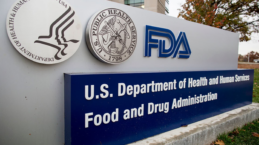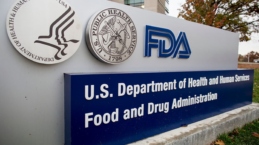

insights
Early Collaboration with FDA for Novel Programs: Maximizing the Emerging Technology Program (ETP)
Established in 2014, the U.S. Food and Drug Administration’s (FDA) Emerging Technology Program (ETP) is a collaborative program in the Center for Drug Evaluation and Research (CDER) where drug developers can meet with the Emerging Technology Team (ETT) to discuss, identify, and resolve potential technical and regulatory issues regarding the development and implementation of a novel technology. These interactions can happen early in the development process and continue throughout the investigational lifecycle of the program. The FDA acknowledges that novel formulations and adopting innovative manufacturing approaches may present both technical and regulatory challenges, which is why CDER’s Office of Pharmaceutical Quality (OPQ) created the program.
The ETP serves as a unique entry point for new technology developers to engage with FDA early and frequently and incorporate feedback into their development and regulatory planning – a big draw into the program. The overarching goal of the program is to aid sponsors in the development of novel technologies that have the potential to improve product safety, identity, strength, quality, and purity. Communication and problem-solving together – with the agency and developers – are a part of the process.
Halloran has seen ETP engagements enable developers to maximize their interactions with the FDA and if the enrollment criteria are met, the program facilitates an advantage in the competitive landscape.
In this blog post, we will examine the program, enrollment criteria, and benefits, and provide a recent example of how Halloran’s client has benefited from the program.
Emerging Technologies Examples
Since its inception in 2014, the ETP has accepted applications for technologies on both a small and large scale, with a recent influx of technologies surrounding continuous manufacturing. In total, there have been 148 proposals of which 119 were accepted. In 2021, the ETP received 13 proposals of which 10 were accepted.1
While the complexities of continuous manufacturing make an obvious choice for an ETP application, various other technologies have been accepted into the program. Several of the unique technologies currently in the program are highlighted on the ETP website,2 including 3D printing manufacturing, model-based control strategies for continuous manufacturing, closed-loop bioreactor control, next-generation sequencing, and long-acting oral formulations.
Emerging Technology Program Criteria
Sponsors interested in applying to the ETP will need to detail how their technology qualifies for the program in a five-page proposal. To qualify, technology must meet the following criteria:
- Considered substantially novel and has the potential to improve product safety, identity, strength, quality, and purity.
- Incorporates an aspect where the Agency has limited previous review or inspection experience, including an innovative or novel product technology, manufacturing process, or control strategy.
In addition to the description of the technology and detailing how the technology qualifies for the program, sponsors must provide a summary of the current development plan, any current roadblocks, and a timeline for the submission of an Investigational New Drug (IND) or a marketing application.
Note that a similar program was launched in 2019 for biologics regulated through the Center for Biologics Evaluation and Research (CBER). The CBER Advanced Technologies Program (CATP) mirrors the ETP and offers interactions with the CBER Advanced Technologies Team (CATT).
Common Technical and Regulatory Issues the Program Addresses and Key Program Benefits
Drug development, even for the most straightforward product, requires frequent collaboration between sponsors and FDA to ensure the product’s development proceeds as smoothly as possible. On the sponsor side, the desire for speed of development is another critical factor. For products that incorporate novel and complex aspects, the partnership between the sponsor and the FDA becomes even more necessary to ensure a smooth and timely progression through preclinical, early-stage, and late-stage development. The ETP allows participants to have pre-submission interactions with the ETT and OPQ review staff to allow for an introduction to the technology.
An early collaboration with the ETT on novel technology allows a sponsor to de-risk subsequent submissions by receiving non-binding regulatory and scientific input regarding what aspects should be addressed in the chemistry, manufacturing, and controls (CMC) and quality sections of the upcoming regulatory submissions. The cross-functional team at the ETT, which includes members of OPQ, the Office of Compliance, the Office of Regulatory Affairs, and ad-hoc Subject Matter Experts, provides a comprehensive quality assessment of their technology.
This interaction allows the FDA, in particular the ETT, to get acquainted with the technology. Those ETT members will remain involved in the product’s review during development to provide consistency in the quality review as the FDA continues to gain an understanding of the novel technology. While the ETT members review the applicable product information and provide advice, it is ultimately the OPQ reviewers assigned to that product’s review team that will have the final say on the acceptability of regulatory submissions. However, engagement with the ETT is a unique way to de-risk a program and seek insight into the FDA’s thinking and likelihood of acceptance.
Joel Welch, Associate Director for Science and Biosimilar Strategy in the Agency’s Office of Biotechnology Products, has noted that no technology is too small, as long as it has the potential to improve product safety, identity, strength, quality, or purity. Despite the recent focus on continuous manufacturing, sponsors developing novel products or using innovative strategies should strongly consider applying for the ETP, regardless of their novel technology’s size or complexity. This step might just be the key to a successful development program in a competitive market.
How Lyndra Therapeutics Has Maximized the ETP
Halloran’s client, Lyndra Therapeutics, (Lyndra) is pioneering long-acting oral therapies, a potentially major advance in oral drug delivery. Lyndra’s proprietary LYNXTM drug delivery platform is designed to deliver medicine over a week or longer in oral form.
Lyndra applied for the ETP in July of 2016 – just two years after the inception of the program. Lyndra provided a complete application, per the criteria mentioned above, for ETT review. Once the ETT reviewed the application, Lyndra met with the ETT for further product discussion. Upon completion of the in-person meeting, Lyndra was granted acceptance into the ETP. This meant the collaboration began prior to their lead candidate’s Pre-IND meeting and IND application, which was during a stage where the technology was in the early preclinical process. The early interactions allowed Lyndra to harness the opportunity to collaborate with the FDA, thus informing their product development and future IND (and New Drug Application (NDA)) submissions.
Discussing this early and ongoing collaboration, Dr. Mary Christian, Lyndra’s SVP of regulatory, quality, and compliance, said, “We’ve been actively engaged with the ETT since being accepted into the Emerging Technology Program. It has been a critical relationship given the novelty of our long-acting oral LYNXTM drug delivery platform, from its design to testing and performance assessment, to manufacturing. The ETT recognized early on that our long-acting oral dosage form would require innovative technologies and manufacturing, especially as we are using custom-designed equipment in a continuous manufacturing approach.”
Lyndra’s communications with the ETT have included both email and virtual/in-person interactions, including a virtual tour of their manufacturing facility. The interactions have provided important feedback for their development program.
Dr. Christian notes, “The ETP provided an opportunity to ensure consistent communication about the development and manufacturing of the LYNXTM drug delivery platform across FDA. During a recent virtual meeting, the ETT invited FDA attendees from OPQ across many CDER review teams. Attendees virtually toured the facility using a self-driving, two-wheeled videoconferencing robot that enabled those in the meeting to ask questions, zoom in to see our unique manufacturing process and understand the development of the LYNX drug delivery system. The interaction offered a valuable opportunity for Lyndra to engage with FDA.”
Overall, Lyndra’s experience with the ETT has been productive and beneficial as they continue development on their proprietary LYNXTM drug delivery platform.
Conclusion
Opportunities for unique engagement with FDA are available to propel innovative technology product developers along their regulatory pathway. Criteria are specific, and if enrollment criteria are met, the ETP enables significant early feedback from the Agency resulting in an advantage in the competitive landscape.
If you are interested in applying for the ETP – or other regulatory pathway programs – don’t delay the discussion. Contact Halloran to discuss your regulatory strategy.
References




